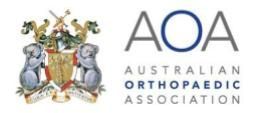Midfoot Fracture
What Is a Midfoot Fracture?
A Midfoot Fracture is also known as a Lisfranc Joint or Tarsometatarsal Joint fracture.
This type of fracture refers to the region in the middle of the foot. It is the junction of the tarsal bones (hindfoot including the ankle & heel) and metatarsal bones (five long toe bones) that connect and make up the arch of your foot.
Lisfranc fractures and fracture-dislocations describe a broad spectrum of injuries where the Lisfranc complex is disrupted by tearing of ligaments and/or fractured bones.
Types of Lisfranc Fractures
Midfoot Lisfranc fractures or injuries range from mild cases with partial sprains of the Lisfranc ligaments, through to severe fractures with dislocation of the midfoot joints.
They are categorised by either:
- Displaced / Unstable Fracture
- Stable Fracture
The injury pattern was initially described by Jacques Lisfranc de St Martin, a Napoleonic-era French surgeon who first noticed the injury in horse riders who fell from their horses, with their foot remaining trapped in the stirrup.
What Causes Lisfranc Fractures?
The most common causes Lisfranc fractures are:
- Motor vehicle accidents
- Slips and Falls
- Contact sports
Symptoms of Lisfranc Fractures?
A midfoot fracture is characterized by:
- Pain
- inability to bear weight
The appearance of bruises on the bottom of the foot around the arch is a clue that a Lisfranc injury and swelling on the bottom of the midfoot are commonly observed symptoms. Severe injuries can result in deformity of the foot and significant pain.
Diagnosis of Lisfranc Fractures
The diagnosis of a Lisfranc injury is made after:
Medical History
Your doctor will ask questions about:
- Current symptoms and their severity
- If an injury was sustained
- Your medical history including family or genetic links
- Your current and past medications
- The impact of the problem on your occupation and lifestyle
Physical Examination
Your doctor perform comprehensive physical evaluation that will include:
- Examining the affected area for swelling, pain, bruising or other features
- Assessing your range of motion, walking pattern and other relevant features
Diagnostic Testing
Once your doctor has completed the physical examination further tests maybe required. These tests can help your doctor determine or eliminate possible causes. These can include:
- X-Ray
- Ultrasound (US)
- Computerised Tomography (CT)
- Magnetic Resonance Imaging (MRI)
X-rays may show broken or displaced bones in the midfoot, and a CT scan is often ordered to further evaluate the bony architecture. An MRI scan is sometimes ordered if the evaluation of the ligaments is required. Weight-bearing or stress X-rays are sometimes used to evaluate the stability of the Lisfranc complex.
Non-Surgical Treatment of Lisfranc Fractures
If the bones are not displaced from their normal positions, and the ligaments and soft tissues are not significantly damaged, non-surgical treatment may be all that is required.
- Rest: Resting the affected area or pausing athletic activity until the symptoms have reduced
- Pain medication: Paracetamol or Nonsteroidal anti-inflammatory medications (NSAIDs) can relieve some pain or discomfort
- Acute injuries may require R.I.C.E.
- Rest: Rest the affected area as more damage could result from putting pressure on the injury.
- Ice: Ice should be applied over a towel to the affected area for 15-20 minutes every two to three hours during the day.
- Compression: Wrapping with an elastic bandage or an elasticated tubular bandage can help to minimize the swelling and provide support to the injured area.
- Elevation: Elevating the injured area above heart level will also help with swelling and pain.
- Walking Boot / Plaster cast: A cast or boot (CAM or Moonboot) may be required in the initial stages of treatment, along with crutches or a cane.
- Physiotherapy: A physical therapist / physiotherapist may recommend exercise training and bracing to strengthen the area of pain and reduce the symptoms. This process commonly involves having a patient engage in a series of helpful exercises.
- Shoewear modification: You may require accomodative or custom shoewear to help support your foot.
- Orthotics: Special shoe inserts may be prescribed that may help relieve the pain and support the foot.
Surgery for Lisfranc Fractures
If non-surgical procedures fail to show efficacy in treating the injury, and the bones and joints have moved due to fractures or soft tissue tearing, then surgery is recommended to restore the normal anatomy of the midfoot.
This can involve:
- Alignment of the fractures in the correct position and held with screws and pins, or
- A tarsometatarsal joint fusion, if there has been significant damage to joint surfaces
The metalwork sometimes needs to be removed once the fractures have healed.
What if Lisfranc Fractures are left Untreated?
Untreated Lisfranc joint injuries can lead to collapse of the midfoot leading to a flat foot deformity. Furthermore, damage to the cartilage from the injury can lead to the joints not functioning properly. Ongoing deformity and cartilage loss leads to arthritis, pain and loss of function which may be quite disabling and progressive.
What are Recovery Outcomes for Lisfranc Fractures?
Lisfranc injuries are regarded as serious injuries, and even minor injuries can have a prolonged recovery period. Patients are normally immobilised in a below-knee cast or boot for 6 weeks, with no weight-bearing during this time, and often a further 4-6 weeks in a boot is required once walking is started. Return to maximum function often takes up to one year after the injury.
Long term outcomes depend on the severity of the initial injury. Some patients won’t get back to their pre-injury function or sport, even with well-performed surgery. It is common to sustain cartilage damage at the joint surfaces during the initial injury, and some people develop midfoot arthritis and ongoing pain down the track. Some patients require further surgery to fuse the midfoot joints to relieve arthritis pain.







